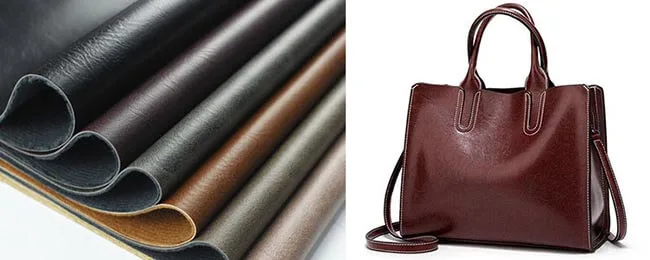In today’s bag design industry, PU leather is rapidly becoming a preferred material for many brands. Valued for its leather-like appearance, affordability, and alignment with sustainable and ethical practices, it offers a compelling alternative to genuine leather. Brands like Matt & Nat, known for their eco-conscious approach, and JW PEI, popular among fashion-forward consumers, have successfully embraced PU leather in their collections. But what exactly is PU leather, and why are more brands turning to it? In this article, we’ll explore the key features, pros and cons, and why PU leather is gaining traction in both luxury and everyday bag manufacturing.
Contents
What is a PU Leather Bag?
Expert Opinion:
“As a materials specialist, I’ve worked a lot with sustainable textiles. Based on my experience, PU leather has improved a lot over the past ten years. I find PU leather excellent for bag manufacturing. It has a good balance: it performs well technically and offers many style options, such as different colors and textures. When a polyurethane coating is put on fabric, it creates a material. This material looks and feels very much like real leather. It also gives designers more ways to customize it. Many brands might not realize an important thing. The quality of the base fabric and the coating process greatly impact how long the final product lasts and how it feels. In my view, the best PU leather products start with strong, tightly woven polyester bases. They also have multiple coating layers. These layers are applied under very specific temperature conditions. This strong foundation allows designers to explore creative ideas. These ideas would often be too expensive or just not possible to achieve with animal leather.“
———— Dr. Emma Richards , Sustainable Materials Researcher and Consultant with 15 years in textile innovation
PU leather, short for Polyurethane leather, is a type of synthetic leather made by applying a polyurethane coating over a fabric base, often polyester or cotton. It mimics the look and feel of genuine leather while offering advantages like being lightweight, water-resistant, easier to maintain, and more cost-effective. With eco-friendly options such as water-based PU and recycled materials now widely available, it has become a sustainable choice for many brands.

A PU leather bag refers to any bag—such as totes, backpacks, briefcases, or handbags—made using this material. PU allows for greater flexibility in texture, color, and finish, making it ideal for modern, fashion-forward designs. Brands like Matt & Nat and Angela Roi have embraced high-quality PU leather, creating stylish collections that reflect both luxury and a commitment to sustainability.
At Sunteam, we go beyond simply sourcing PU materials—we invest in understanding the craft behind it. Our development team has personally visited PU leather factories to learn the production process hands-on: from selecting the base fabric and applying uniform coatings, to embossing textures and finishing treatments. Through these firsthand experiences, we gained insight into how factors like temperature and pressure affect the final durability, texture, and appearance of PU leather.

These factory visits gave our team a deeper technical perspective that directly influences the quality of the bags we manufacture. We now have a sharper eye for choosing the right materials and ensuring tailored, high-quality PU leather bags that meet each client’s unique specifications.
For us, mastering PU leather is not just about making a product—it’s about combining innovation, craftsmanship, and design intelligence to deliver bags that reflect your brand’s values. And it all starts with understanding the material, from the factory floor to the finished item.
PU Leather Bags Pros for Bag Manufacturers

After gaining insight into the manufacturing process of PU leather bags, let’s explore the key advantages of PU leather from a B2B perspective. These benefits not only highlight the material’s inherent qualities but also present valuable opportunities for brands and manufacturers to enhance product competitiveness and better meet client demands. The following points will help you understand why PU leather bags are becoming a preferred choice for many businesses in sourcing and customization.
Sustainability: PU leather is a synthetic material that reduces reliance on animal hides, aligning with growing demand for eco-friendly products. Offering PU leather bags helps brands meet sustainability goals and appeal to environmentally conscious consumers.
Cost Efficiency: Compared to genuine leather, PU leather is more affordable to produce, enabling manufacturers to offer competitively priced products without sacrificing style. This cost advantage supports scalable production and attractive pricing for bulk orders.
Customization Flexibility: PU leather’s versatility allows for a wide range of colors, textures, and finishes, making it ideal for brands seeking personalized or trend-responsive collections. This flexibility enhances product differentiation in competitive markets.
Easy Maintenance: PU leather’s water resistance and stain repellence reduce customer complaints and returns, improving brand reputation. Its low-maintenance nature is a selling point for professional and everyday users alike.
Lightweight: PU leather bags weigh less than traditional leather, offering enhanced comfort for end-users. For B2B clients, this translates to products that combine premium appearance with practical usability, increasing market appeal.

According to the “China PU Bag Industry Market Development and Investment Strategy Research Report (2024-2030)” by 51 Industry Report, the PU bag market in China is experiencing rapid growth. The market size is expected to reach approximately RMB 23.5 billion by 2028. Meanwhile, the waste plastic recycling market is projected to exceed RMB 110 billion, highlighting strong support from sustainable recycling systems for PU materials. With increasing consumer demand for quality and customization, functional and personalized PU bags have become key industry trends. These data indicate a promising growth outlook and robust momentum for PU leather bags in the Chinese market.
The Cons of PU Leather Bags

Building on the advantages of PU leather bags, it is also important to recognize some inherent drawbacks that can affect not only end users but also brands, product developers, and sourcing teams. While PU leather offers a compelling balance of cost, aesthetics, and ethical appeal, its limitations in certain performance areas may present challenges across the product lifecycle—from design and production to customer satisfaction and brand positioning.
Understanding these potential downsides is essential for making well-informed material decisions, particularly when aligning product quality with brand values, target market expectations, and usage scenarios. The following points outline the most common disadvantages of PU leather bags from a business and manufacturing perspective, offering insights to help stakeholders weigh trade-offs and choose the most appropriate material for each collection or use case.
Lower durability compared to genuine leather (prone to aging and cracking)
The physical properties of PU leather result in less durability than genuine leather. Prolonged use or frequent bending can cause cracks and wear, increasing after-sales costs and potentially harming brand reputation and customer satisfaction.
Poor breathability (unsuitable for use in hot climates)
PU leather’s limited breathability leads to heat and moisture buildup in warm environments, negatively affecting user comfort and potentially restricting sales in certain markets or seasons.
Noticeable chemical odor (common in low-quality PU)
Low-grade PU leather often emits a strong chemical smell, complicating storage and logistics and increasing the risk of returns, which poses additional challenges for businesses.
Difficult to degrade and recycle (environmental concerns)
PU leather has limited biodegradability and is difficult to recycle. Growing environmental regulations and consumer demand for sustainable products may restrict procurement and sales opportunities.
Significant quality variability (complex supply chain and production management)
Variations in PU leather grades and manufacturing processes can lead to inconsistent product quality. This requires businesses to invest more resources in supply chain oversight and quality control to ensure customer satisfaction.
In summary, while PU leather offers multiple benefits, its drawbacks in durability, environmental impact, and supply chain management must be carefully considered by bag-making companies to develop effective sourcing and production strategies.









